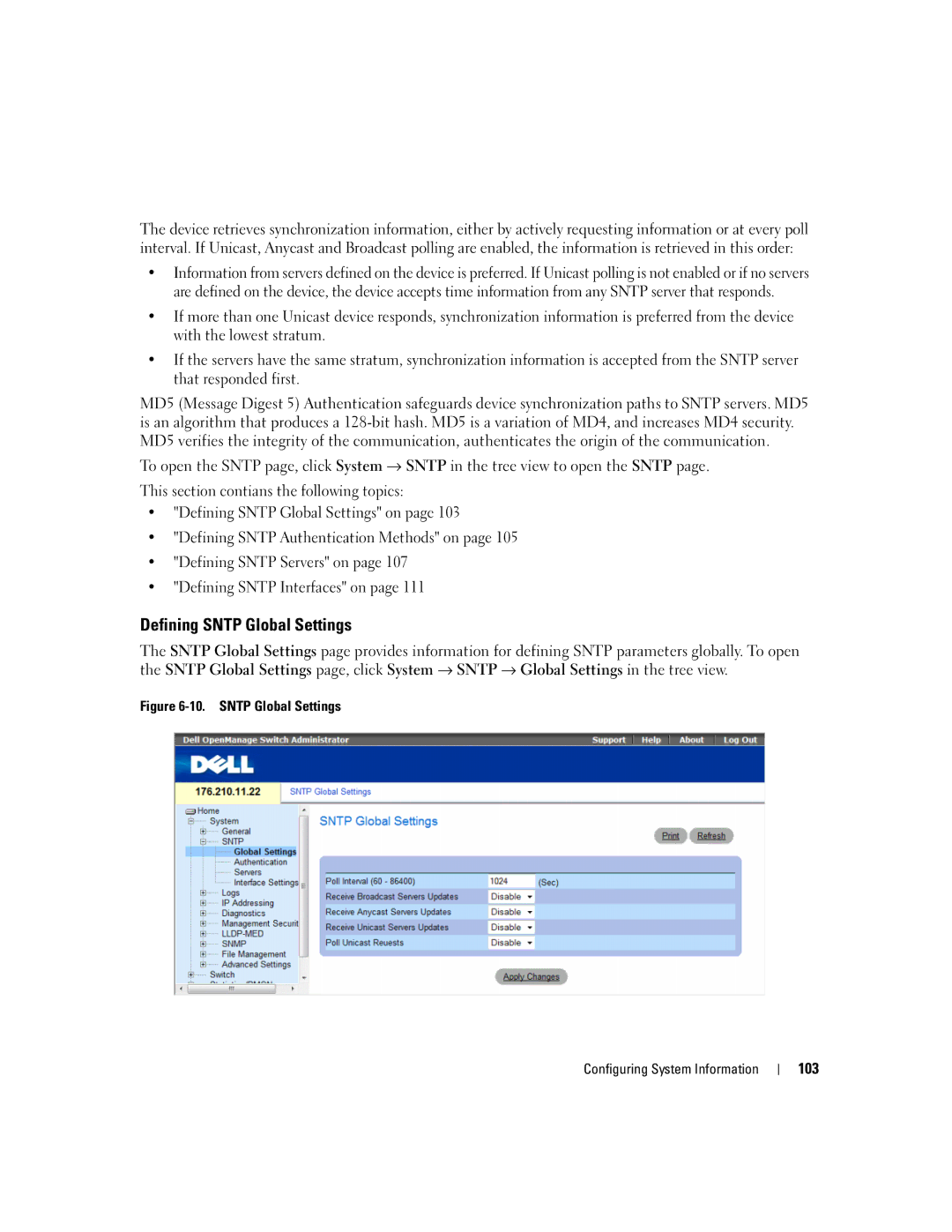
The device retrieves synchronization information, either by actively requesting information or at every poll interval. If Unicast, Anycast and Broadcast polling are enabled, the information is retrieved in this order:
•Information from servers defined on the device is preferred. If Unicast polling is not enabled or if no servers are defined on the device, the device accepts time information from any SNTP server that responds.
•If more than one Unicast device responds, synchronization information is preferred from the device with the lowest stratum.
•If the servers have the same stratum, synchronization information is accepted from the SNTP server that responded first.
MD5 (Message Digest 5) Authentication safeguards device synchronization paths to SNTP servers. MD5 is an algorithm that produces a
To open the SNTP page, click System → SNTP in the tree view to open the SNTP page.
This section contians the following topics:
•"Defining SNTP Global Settings" on page 103
•"Defining SNTP Authentication Methods" on page 105
•"Defining SNTP Servers" on page 107
•"Defining SNTP Interfaces" on page 111
Defining SNTP Global Settings
The SNTP Global Settings page provides information for defining SNTP parameters globally. To open the SNTP Global Settings page, click System → SNTP → Global Settings in the tree view.
Figure 6-10. SNTP Global Settings
Configuring System Information
103
